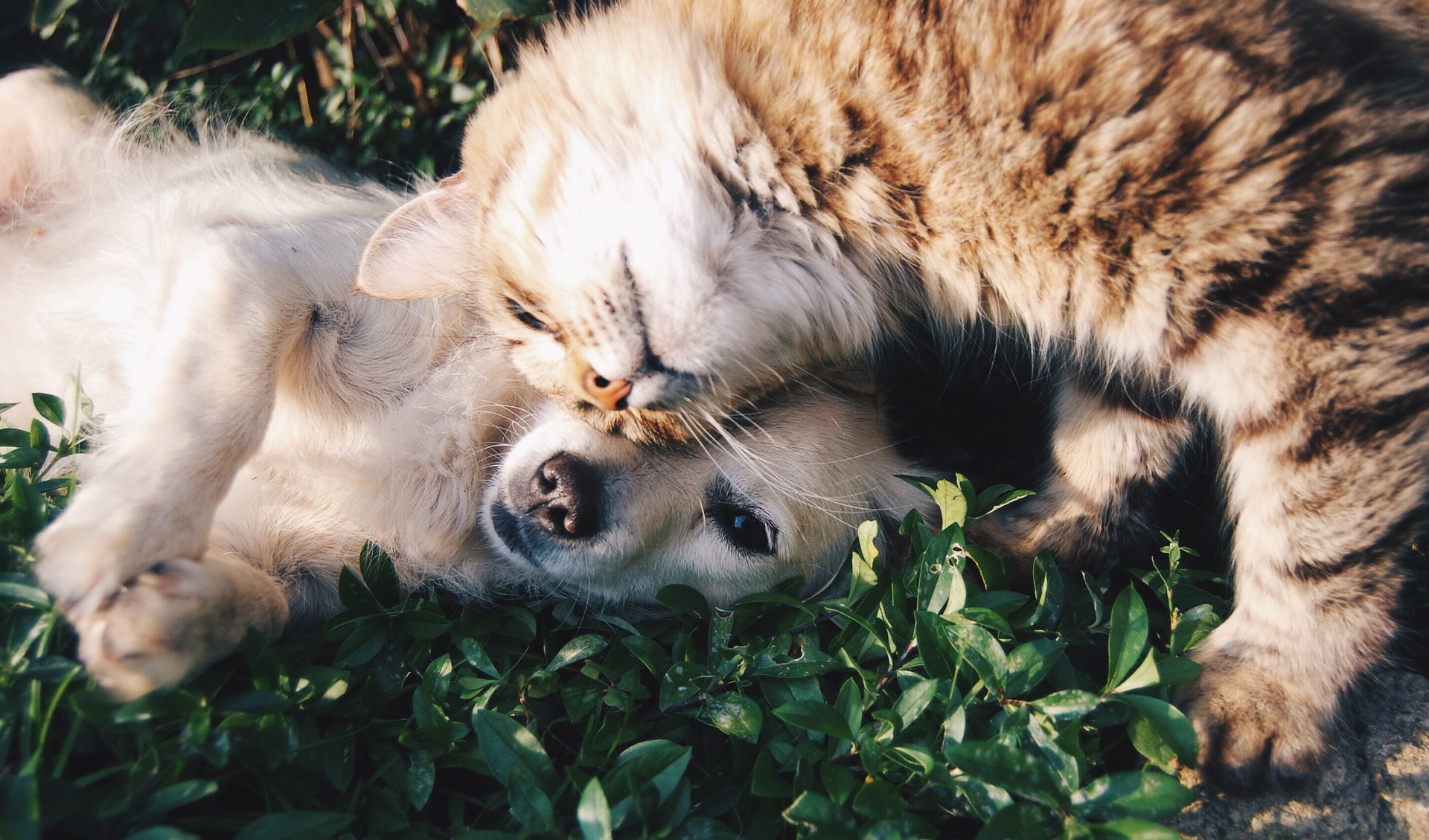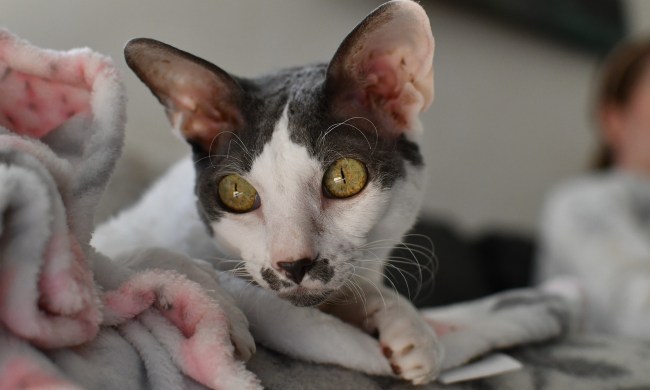Everyone’s heard the phrase “fighting like cats and dogs,” and sometimes, that absolutely holds true. However, other times, cats and dogs play in peaceful harmony. If you share living space with a cat and dog, you’ve probably observed a range of interactions. Does your cat lick your dog? Or is your feline one for drive-by swatting? Maybe it’s the reverse, and your dog attempts to lick your cat. What do those interactions mean? And why do some cats and dogs struggle to get along? No worries — we’ve got the answers you need to ensure your dog and cat play well together (or at least coexist).

Integrating cats and dogs starts at the beginning
Certain dog breeds intermingle with cats pretty well. Generally, though, mixing cats and dogs into a peaceful household takes some work. The younger the furry kiddos are to begin with, the higher your chances of success. That means 6 months or younger for cats and 1 year or younger for dogs. Cats and dogs that grow up together learn to play and live beside each other. That means fewer chances for fights and misunderstandings.
However, if you have older animals, all is not lost. Animals in rescues and shelters are often “tested” for compatibility. You can find dogs that are “cat-friendly.” On the flip side, many cats get labeled as “dog-tolerant.” Chatting with the volunteers will provide you with the answers you’ll need.
Mixed signals
Some cat and dog fights result from misinterpretation of body language. Surprise! Cats and dogs don’t use the same signals when trying to communicate with each other. So even though your fuzzy companions try to play, a fight breaks out when one of them mistakes a cue.
To wag or not to wag?
Dogs wag their tails when they’re happy or excited. That loose-tail movement is an invitation to play. We recognize the wag, and we’ll grab a toy for a game of fetch. However, to your cat, that body language suggests a warning.
Cats use a loose twitch of the tail to express discontent. So while your dog meant no disrespect, your cat saw a potential sign of attack. And since cats tend to remain the household bosses, they instigated a fight to put your dog in their place. (Oops!)
Ears up or down?
Cats interested in the world keep their ears up and pricked forward. A cat with flat, folded-back ears is angry and displeased with something. But your dog? They may not get that message.
Dogs move their ears in the complete opposite direction. Forward ears indicate aggression; backward ears translate to fear. So even when your pets try to “talk” with each other, the signals get mixed. The confusion can result in indifference at the best of times. At the worst? You may see growls and hisses.
Tummies and toes
Soliciting playtime doesn’t work the same, either. A dog that wants to encourage a game will roll over and show their belly. It’s a submissive tactic promising, “I won’t hurt you.” A cat person will assure you that a cat in the same position is getting ready to latch on with teeth and claws. (Ouch!)
We teach our dogs to lift their paws to shake. It’s part of training, and our canines see no harm. When cat’s lift a paw, dogs think the game’s on. At least, until the cat swats them across the nose. If you’ve noticed your cat swatting your dog (awake or asleep), it might be a challenge.

Picking out the good signals
Luckily, dogs and cats that share a home learn to read those mismatched signals with time and patience. And there are commonalities dogs and cats share:
- Blinking: Slow, frequent blinks work the same in both species. This translates to, “I’m safe and friendly.”
- Sleeping position: If they’re comfortable with each other, dogs and cats sleep close. You may even find them snuggled in the same bed! Animals share space when they’ve had positive interactions together.
- Grooming: We know cats groom each other. If your cat’s willing to lick your dog (or vice versa), this is called allogrooming, and you’re golden. Allogrooming is a genuine sign of affection.
Playing or fighting?
Cats and dogs can engage in play fights safely. There’s a fine line between a game and aggression, though. You should always keep a close eye on your kiddos when they interact in this manner. And watch for the following warning signs:
- Your dog starts barking loudly or chasing your cat
- You notice that abrupt twitching of your cat’s tail
- Someone starts growling low in pitch
- There’s any hissing
- You notice claws or teeth
If you notice one of those signs, the play has escalated to a fight. It’s time to wade in and call a timeout. Separate the pair to give them time to calm down. Don’t give one pet extra attention over another. Remember, you want to keep the peace. Reassure both, but let the tension settle down.
Loving like cats and dogs
The majority of cat and dog households live peacefully. Everyone gets along without too many hiccups. Once you understand the problem of misunderstood body language, you’ll learn to read your pets’ interactions. Then you can serve as a mediator. You’ll smooth out ruffled fur and restore the peace (because a cat and dog snuggled together in a bed is too adorable to resist).


